
Guitar Parts (lesson)
Guitar necks are attached to the body in two ways: 1. Bolted on, whereby the neck is a separate piece entirely and uses screw and bolts to attach it. 2. Neck through where the body and neck are one piece. They come in a variety of different shapes that. Where is it found: much like the body you can't really miss it!

All The Parts of a Guitar Explained With Diagram
Headstock. A classical guitar's headstock (also known as a peghead) is located at the top of the guitar and is primarily used to house the tuning keys. It is connected to the guitar's neck and is used to hold all 6 strings in place. Generally speaking, the headstock on a classical guitar will contain the tuning keys, string rollers and the nut.

Anatomy Of An Acoustic Guitar [The Complete Guide]
The nut impacts your guitar's overall playability and tone, one of the more underrated parts. The nut will enable proper string spacing, string height, action, and even string durability. It can also help you eliminate fret buzz. The most common materials found in nuts include bone, ivory, metal, plastic, ebony, and graphite.

Guitar Bender The parts of a guitar
2. Tuning Peg. The Tuning Peg is integral to the guitar presented on the sides, also known as Machine heads. There are 6 tuning pegs - 3 to the right and 3 to the left. With the tuner's help, these tuning keys are twisted in a certain way to set the intonation. The tuning is also known as Standard Tuning. 3.
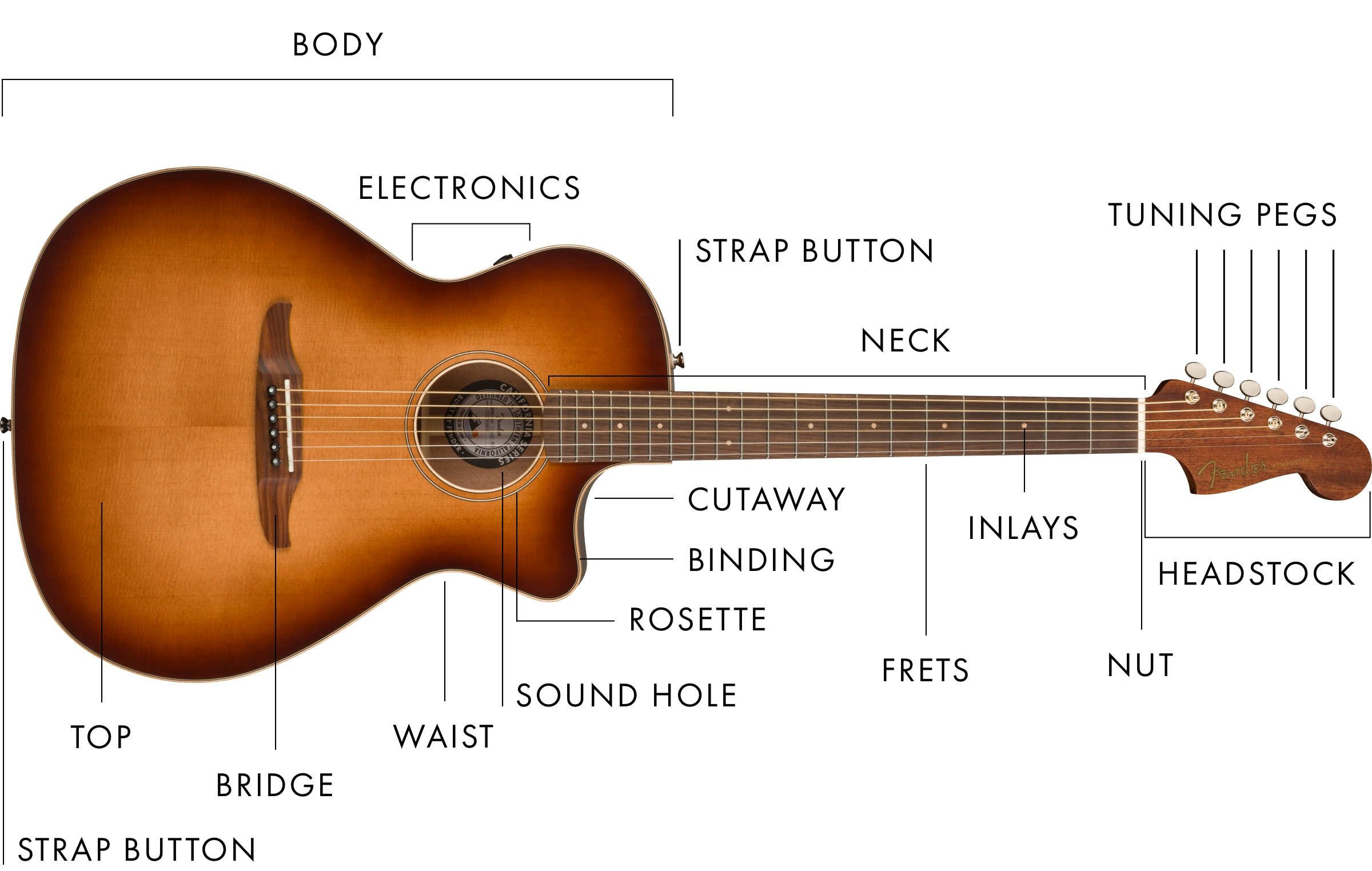
Acoustic Guitar Parts Diagram
Guitar Parts Names. Learn every inch of your guitar March 2, 2023 Whether you're new to playing the guitar or are more experienced, it's helpful to understand the different parts of your instrument in order to get the most out of it. All of the guitar parts work together to produce what's most important - the sound!

Acoustic Guitar Anatomy Diagram and Definitions
Parts of the Guitar Body The body is the main bulk of the instrument. As the main bulk of the guitar, it's arguably the most important component and plays a large role in the overall tone, especially with acoustics.
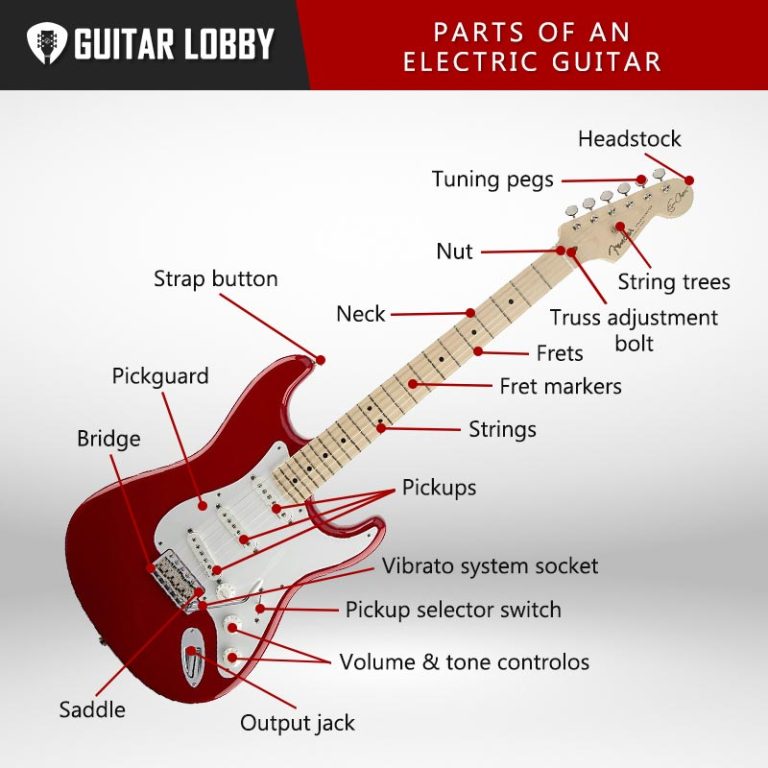
Parts of an Electric Guitar (with Diagram & Videos) 2023 Guitar Lobby
Anatomy of an Electric Guitar Explained Headstock Body Pickguard Output Jack Neck Truss Adjustment Bolt Truss Rod Fretboard Frets & Fret Markers Strings Hardware Tuning Pegs Bridge and Saddle Nut String Trees Tailpiece Strap Buttons Vibrato System Onboard Electronics Pickups Pickup Selector Switch Volume and Tone Controls

The Parts of an Acoustic Guitar Sound Pure
Parts of the Acoustic Guitar Explained O.k. now let's look a little bit more in-depth into the individual parts of the acoustic guitar. Some of this will be a little bit technical for some or obvious for others. Headstock The headstock is the very top of the guitar and houses the machine heads. Machine Heads The machine heads are very important.

Parts of the Classical Guitar [The Definitive Guide]
The Parts of a Guitar Generally speaking, there are two types of guitars: acoustic and electric. Luthiers, or guitar makers, build acoustic guitars so they can be played without amplification. Electric guitars require an amplifier to produce a sound loud enough to hear well.

Parts Of A Guitar Explained (Acoustic & Electric Diagrams)
Parts of the Acoustic Guitar: Body - This is the main part of the guitar and is where all of the sound is produced. It is hollow on acoustic guitars and consists of a top, back and sides. The top is also called the soundboard and is usually made of spruce, maple or cedar on acoustic guitars.
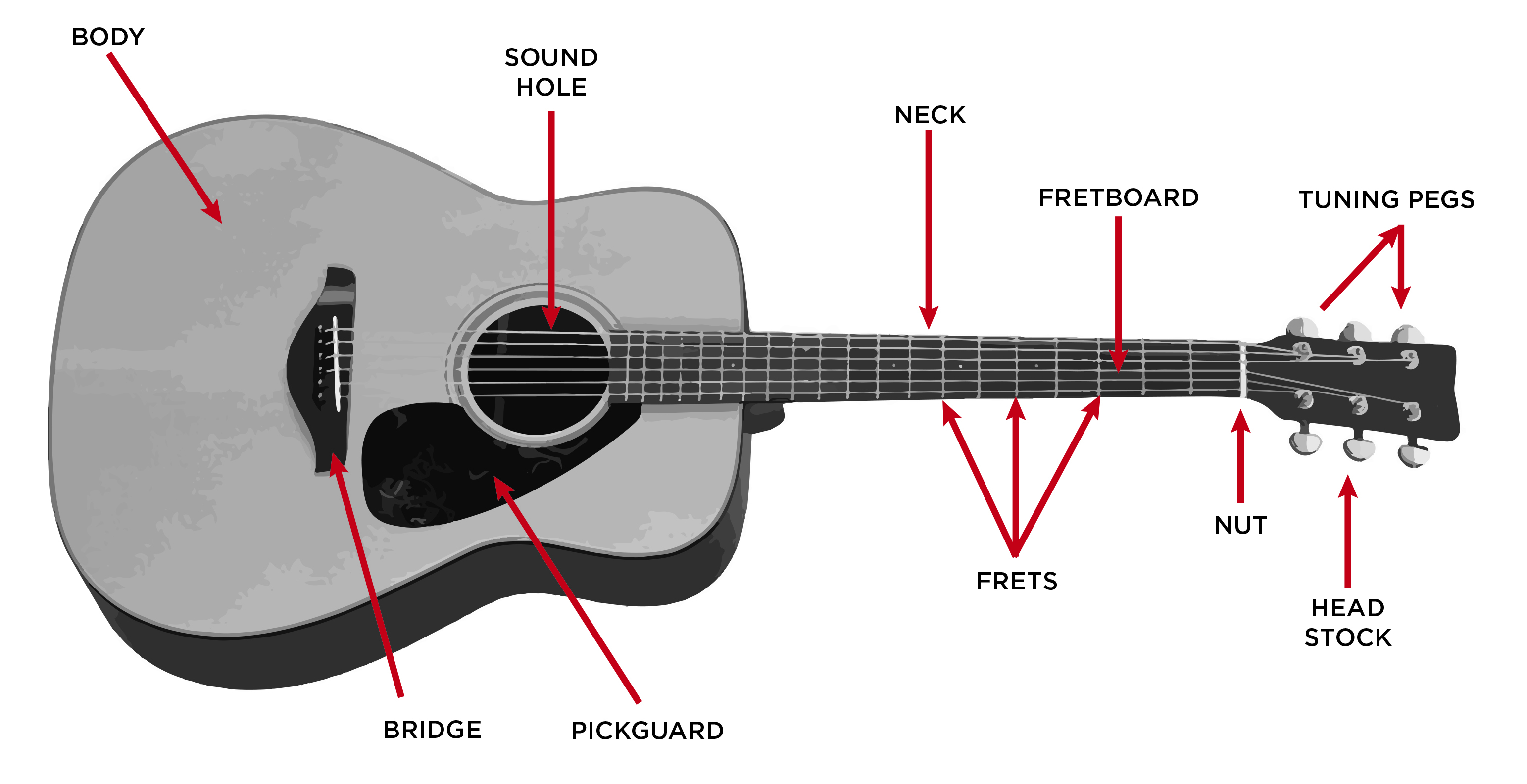
The Acoustic Guitar Step By Step Buying Guide GAK BLOG
Overview This guide will outline the common anatomy of the electric guitar. The picture below shows three common styles of guitars. Even though they each look pretty different, they all share core components that allow them to function in the same way.
Parts of an Acoustic Guitar Photo Guide
Guitar Parts Diagram - Main Parts Of The Guitar As illustrated in the diagram below, the guitar (like humans!) has a head, neck and body. The head or headstock is where you tune the guitar. The neck is where you hold the guitar in your left hand (if you're right handed) or your right hand (if you're left handed).

Print DUYAN Learning CenterMactan Arts Academy
The anatomy of an electric guitar consists of the body, neck, headstock, fretboard, frets, nut, tuning machines, strings, pickups, volume and tone controls, bridge, saddles, output jack, and other parts. You'll see all the various parts of the electric guitar in the following illustration. Electric Guitar Anatomy.

Basic Knowledge of Guitar
Bridge: The bridge is what keeps the strings of the guitar attached to the body. Like the nut, this is the other area of the guitar through which the vibration is passed, creating the tone of your guitar. It does also function as the place where intonation is set on an electric guitar, via a moving part called a saddle.
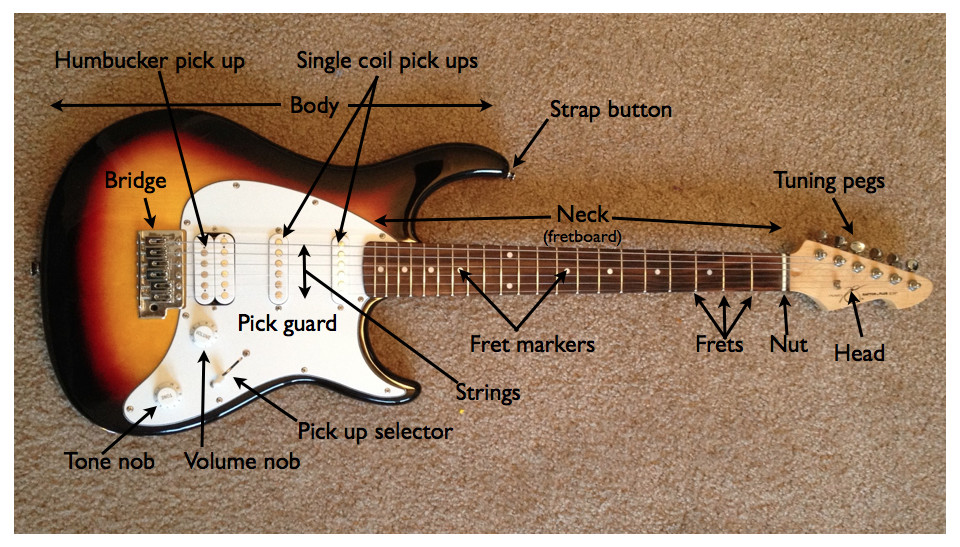
Electric Guitar Labeled Parts Self Taught Guitar Lessons
Without further ado, below is a labeled diagram that shows the various components of an electric and acoustic guitar. Head The head's primary purpose is to hold the tuning mechanisms/gears and ends of the strings. Do you know that the guitar's resonance is also transmitted through the head when the guitar is played? Try this.
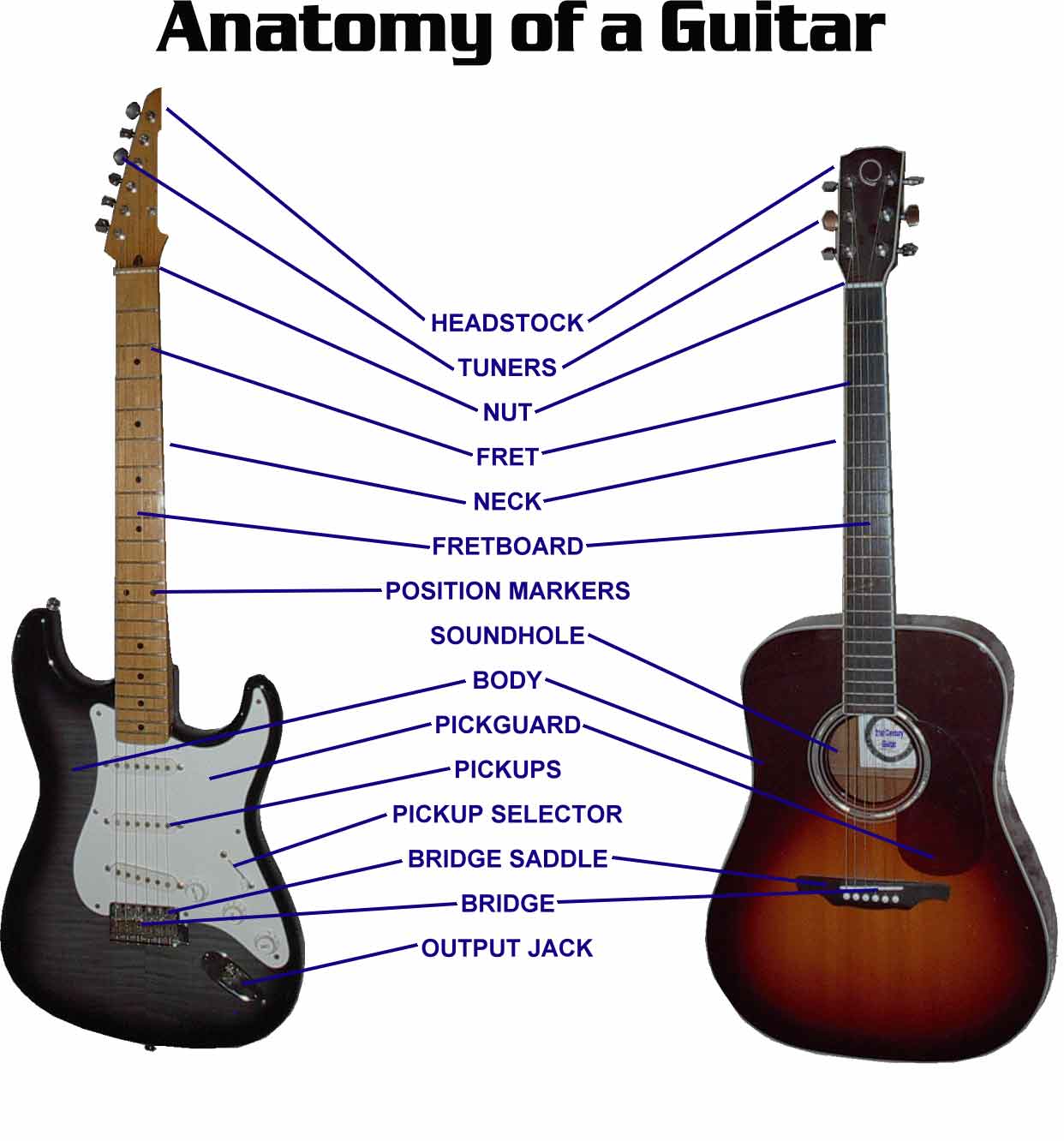
Guitar Gurukul Parts of a Guitar
4. Head -The head holds the tuners. The design of the head determines the placement and design of the tuners also. 5. The nut - The nut of the guitar holds the strings in place on the neck. The material the nut is made of affects the sound of the guitar and it can be made of a variety of materials from fossilized mammoth bone to plastic.